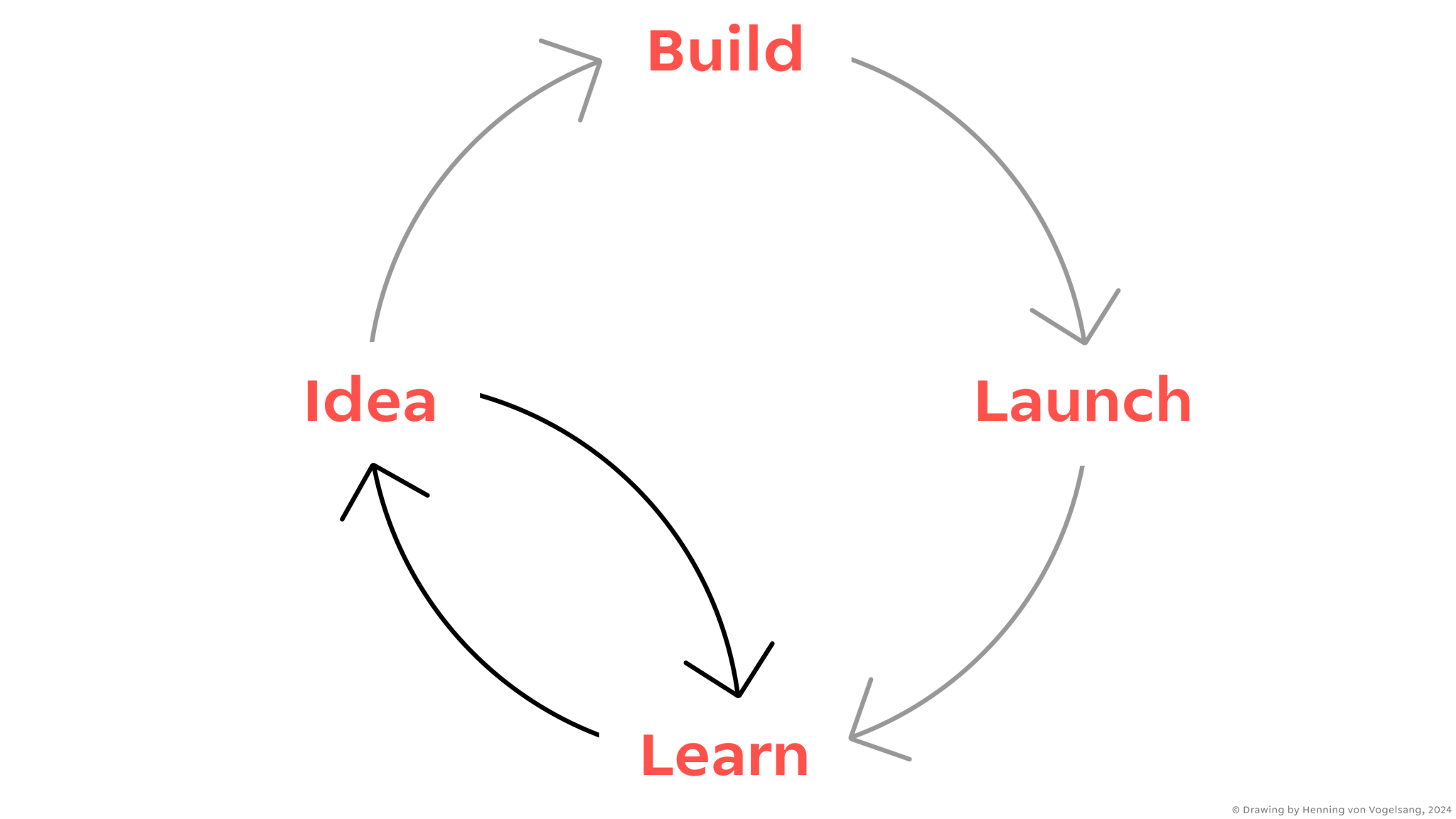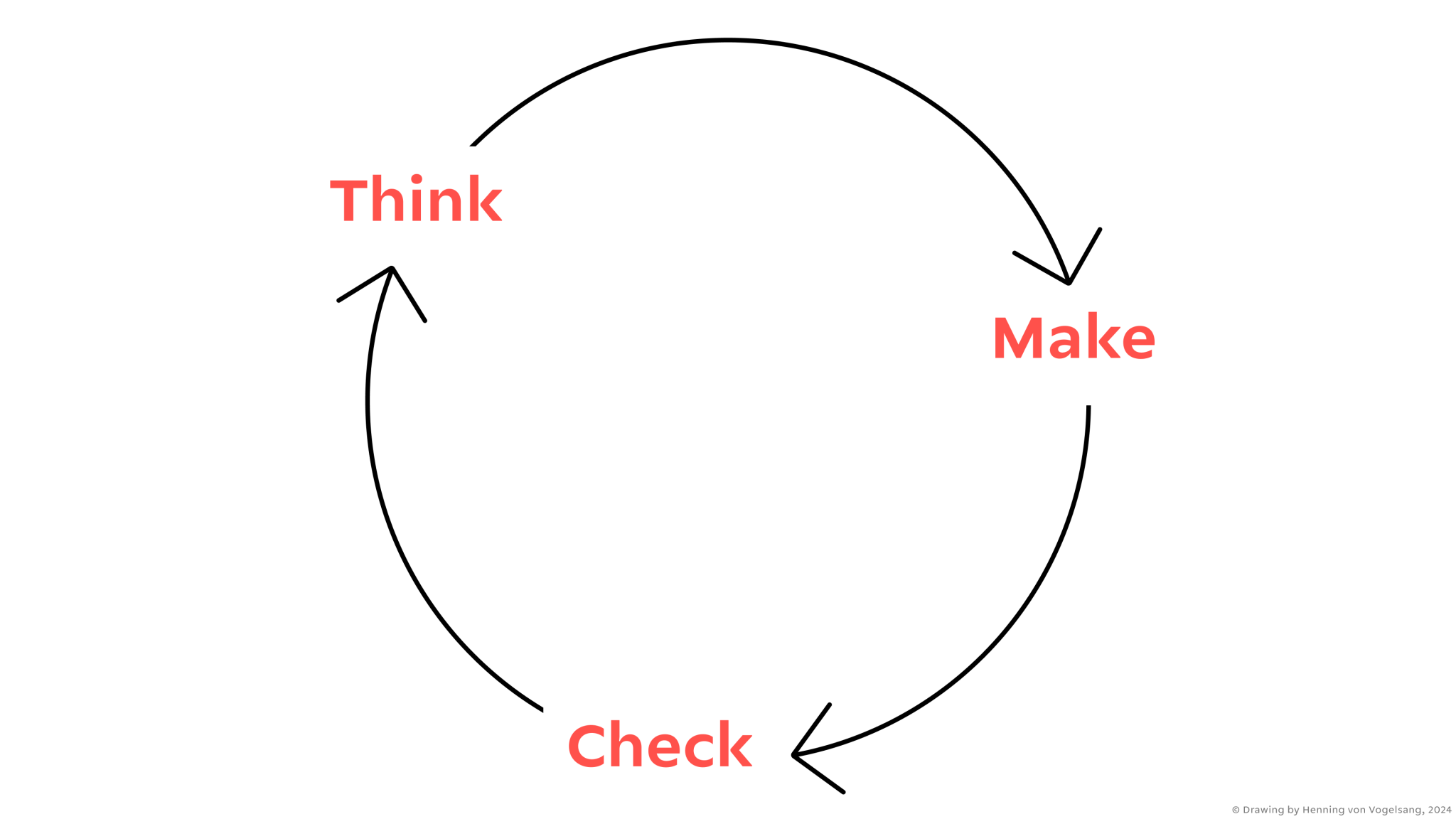Popular in agile development, Design Sprints are used to rapidly solve problems, validate ideas, and build solid software products. Originally developed by Google Ventures, a design sprint is a structured process that allows cross-functional teams to collaborate and iterate on ideas in a short period of time, typically five days.

The Design Sprint model
The main goal of a Design Sprint is to quickly gain insights and feedback from the entire team in order to inform the development process. By bringing together individuals from various disciplines, such as design, development, marketing, and product management, a design sprint ensures that all perspectives are considered and integrated into the final solution. It’s possible (and recommended) to integrate users in this process, but user insights are sometimes neglected in this process.
Progress with Design Sprints
Even though Design Sprints work differently, they’re losely based on Design Thinking. Also, the similarities of Design Sprints with the principles of Lean UX are not coincidental: The fast, iterative process both methods have in common allows us to utilise a technique with four steps. The circular process is nearly identical with the “Think, Make, Check”-approach known from Lean UX.

The Lean UX method
The process of a Design Sprint typically follows a set schedule, starting with defining the problem statement on day one, ideating and sketching solutions on day two, deciding on the best solution on day three, prototyping on day four, and testing with stakeholders and (ideally) real users on day five. This fast-paced approach allows teams to quickly validate ideas and make necessary iterations before investing significant time and resources into development.
However, having no user insights from the beginning bears the danger of having to go back to day one, if fundamental changes are necessary.
Benefits of Design Sprints
One of the key benefits of Design Sprints is the ability to rapidly test and validate assumptions. This is especially useful for iterative MVP (Minimal Viable Product) development.
By creating a prototype and testing it in a short timeframe, teams can quickly identify any issues or areas for improvement before moving forward with development. This not only saves time and resources but also increases chances that the final product meets stakeholder needs and expectations.
Design Sprints also promote collaboration and creativity within teams. By bringing together individuals with different backgrounds and expertise, teams are able to leverage diverse perspectives and skills to create innovative solutions. The structured nature of a design sprint also helps to keep teams focused and on track with the product feature requirements, ensuring that all aspects of the project are considered and addressed.
Pitfalls of Design Sprints
The general approach to get results fast is of course helpful, especially in a rapid development environment. Figuring out what works and doesn’t stays at the centre of this approach. However, because it doesn’t have a research phase, this method also inherits a higher chance of hastily racing towards the goal, and in doing so it’s easier to forget or omit valuable user context.
Design Sprints typically involve a small team working together to come up with solutions to a problem, but without understanding the context in which users will be using the product, the solutions that are generated may not be effective. User context research is essential for gathering insights about the needs and preferences of the target audience, which can inform the design decisions made during a design sprint. Without this research, the solutions that are produced may not resonate with users and may ultimately fail to meet their needs.
Conclusion
While Design Sprints can be a valuable as a method to quickly iterate on ideas in Agile development, it is important to be aware of the disadvantages that come with the change of focus on efficiency and production. Without conducting thorough context research, and without knowing much about user expectations and needs, the success of the product may be compromised. It is important for teams to strike a balance between speed and quality when using design sprints in Agile development to ensure that the solutions that are produced are effective and user-centred.
This article was first published on my blog, on March 6th, 2024.
